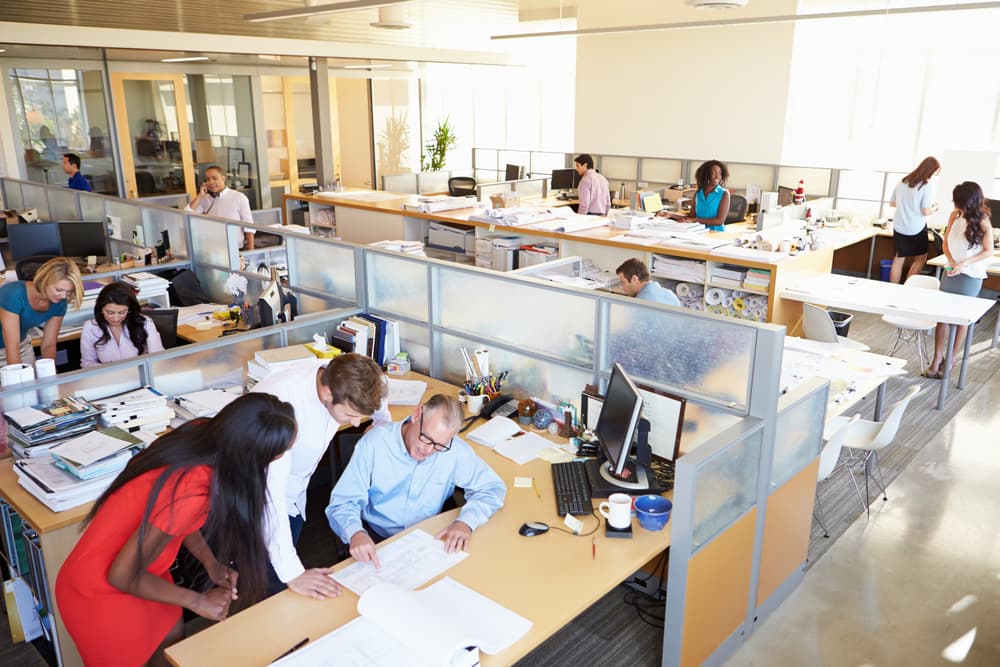Could the secret to boosting your human capital — the economic value of your employees’ skill sets — be as easy as rearranging a few chairs?
According to a new report from Cornerstone and Harvard Business School, the answer is yes. The report, which analyzed data on more than 2,000 employees over a two-year period, found that placing the right type of workers in close proximity to each other generated up to a 15% increase in organizational performance.
(A 2013 report found that only one in four U.S. workers is in an optimal workplace environment. Sound levels, collaboration, concentration, interaction, and more are impacted by the office layout.)
The results have big implications for small businesses, as traditionally effective approaches to increasing human capital (selective hiring, training, leadership development and benefits) can come at a significant cost. A Bersin by Deloitte report found that in 2013, businesses across the United States spent an average of $1,169 per learner, and tech companies spent an average of $1,847.
Below are three things you should know about “spatial management” — how to best physically place workers within an organization — before trying it for yourself.
Pair people with opposite strengths
According to the report there are three types of workers: 1) Productive, 2) Generalist and 3) Quality. The study found that the best pairings are symbiotic relationships between employees who fall in different categories; for example, a productive person’s time management skills will “spillover” to help a quality worker improve turnaround time.
 To define which category your employees match, explore questions such as: How long does it take the employee to complete a task? Productive workers complete tasks quickly but lack in quality. How satisfied is the recipient of the completed task? Quality workers produce superior quality but lack in speed. Is the employee both relatively productive and focused on quality? Generalists are average across both dimensions.
To define which category your employees match, explore questions such as: How long does it take the employee to complete a task? Productive workers complete tasks quickly but lack in quality. How satisfied is the recipient of the completed task? Quality workers produce superior quality but lack in speed. Is the employee both relatively productive and focused on quality? Generalists are average across both dimensions.
“We don’t traditionally think of physical office space as something influenced by big data,” says Michael Housman, workforce scientist in residence for HiQ Labs and one of the authors of the report. “But this study shows that simple, spatial decisions — like where someone sits — can actually be strategic and data-driven.”
Spillover works both ways
Seating certain people near each other can have a positive impact on performance, but there are some workers who are better off separated. A toxic worker, for example, influences others’ performance in a negative way.
If toxic employees are near each other, it increases the probability that one of them will be terminated by 27%. This suggests that companies should pay close attention to employee engagement surveys to understand how employees feel about their work environment. Surveys can root out toxicity by providing an early warning for managers and HR to intervene.
Reorganize to Increase Revenue
Once your organization identifies which negative or positive “spillovers” exist in your office and how they impact employees, management can step in and provide a spatial plan. A new seating chart is no small matter: Strategic seating could add an estimated $1 million in annual profit for an organization of 2,000 workers.
“These results suggest that companies can develop a framework to maximize organizational performance simply through the physical placement of workers,” says report co-author Dylan Minor, visiting assistant professor for Harvard Business School. “Physical space is something organizations can manage relatively inexpensively and should be viewed as an important resource in increasing the returns to human capital.”
